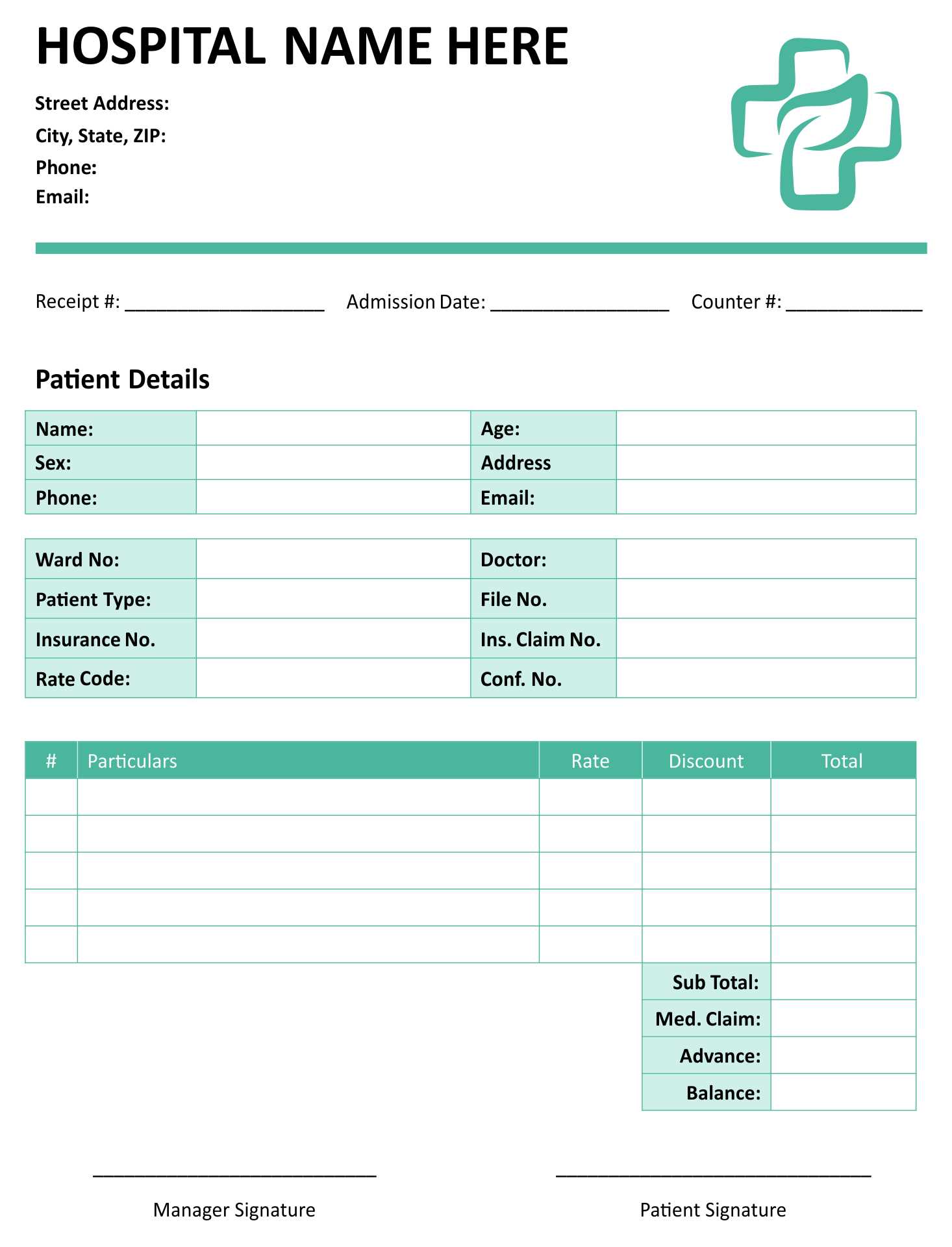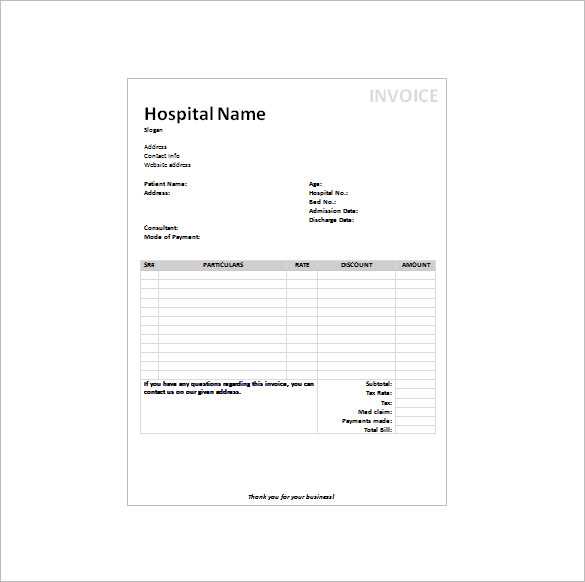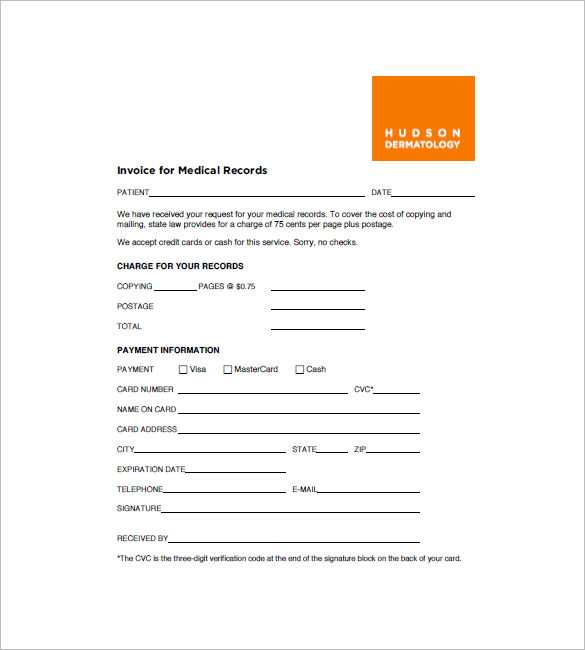
Creating a well-structured hospital receipt is key for clarity in financial transactions between patients and healthcare providers. A template helps standardize this process, ensuring that all necessary details are included in a concise and professional manner.
Include the hospital’s name, contact details, and logo at the top to make the receipt look official. This should be followed by the patient’s full name, the date of service, and a unique receipt number for easy tracking.
Itemize the services provided, including consultations, treatments, and medications, with corresponding costs. Don’t forget to mention any taxes or additional fees, as transparency in billing builds trust with patients.
End with the total amount due, payment method, and space for any relevant notes. A well-organized receipt ensures that patients can easily understand their charges and aids in maintaining accurate financial records for the hospital.
Hospital Receipt Template
Use a well-structured receipt template to ensure accurate billing and maintain transparency with patients. The template should include basic information such as the hospital name, address, and contact details. Make sure to list the date of service, the patient’s name, and their medical record number for easy identification.
Key Components of the Template
Include a breakdown of services provided, such as consultations, diagnostic tests, and treatments, along with their respective charges. Specify the total amount due, any discounts or insurance coverage applied, and the final balance. Ensure there is a clear section for payment details, indicating whether the payment was made in full, partially paid, or pending.
Customization Options

Consider adding a field for payment methods to track whether the payment was made via credit card, insurance, or cash. It’s also helpful to include a reference number for easier future inquiries or audits. A footer section for terms and conditions can also clarify payment deadlines or late fee policies.
Designing a Clear Layout for Medical Charges

Begin with organizing charges into categories like consultation, diagnostic tests, and treatments. Label each section clearly with bold headings and a simple font. Group similar items together, making sure each charge is listed on its own line, with a description next to it. This helps patients understand what they’re being billed for.
Ensure that every amount is easy to locate by aligning all monetary values to the right. Using a consistent currency symbol will also help avoid confusion. Include a subtotal for each section, followed by a total at the bottom of the receipt for quick reference.
Incorporate spaces between the charge sections for better readability. Avoid overcrowding, and if there are many items, consider using bullet points or numbered lists to break them down further. Add a clear distinction between charges, taxes, and discounts, if applicable.
Finally, make the payment methods section noticeable. Indicate whether payment is made or pending, and provide contact details for any queries related to the bill. This transparency in layout will minimize confusion and promote trust.
Including Key Information for Insurance Claims

Ensure the receipt includes the patient’s full name, insurance policy number, and the date of service. Add a breakdown of charges for each treatment or procedure provided, with corresponding codes. The provider’s contact details and tax identification number (TIN) should be visible. Include the total amount billed, any patient payments made, and the remaining balance. Clearly specify the payment method and, if applicable, a note about the submission status to the insurer. Accurate coding and clear itemization help streamline the claim process, reducing delays or rejections.
Customizing Templates for Different Departments and Services

Adjust the hospital receipt template to fit the specific needs of various departments by focusing on the unique information each department handles. Each department may require distinct fields, allowing for clearer documentation and smoother processing.
Department-Specific Adjustments
- Emergency Room: Include additional fields for triage codes, urgent care services, and insurance verification specifics.
- Laboratory: Add spaces for test names, results, and patient sample IDs, ensuring the receipt reflects the detailed nature of lab services.
- Surgery: Implement fields for procedure codes, anesthesia details, and surgeon’s name, to ensure transparency in surgical services.
- Radiology: Incorporate diagnostic imaging details, like scan type, date of service, and radiologist’s report summary.
Service-Specific Modifications
- Outpatient Services: Modify the receipt to highlight the type of consultation, visit duration, and follow-up instructions.
- Pharmacy: Include information about prescribed medications, dosages, and any relevant instructions for the patient.
- Physical Therapy: Add therapy session details, types of exercises, and therapist notes to the receipt for accurate record-keeping.
Tailoring receipts this way ensures each department’s distinct needs are met while maintaining consistency across the hospital system. Adjusting the template per department or service improves communication and patient satisfaction by offering receipts that reflect the full scope of care provided.


